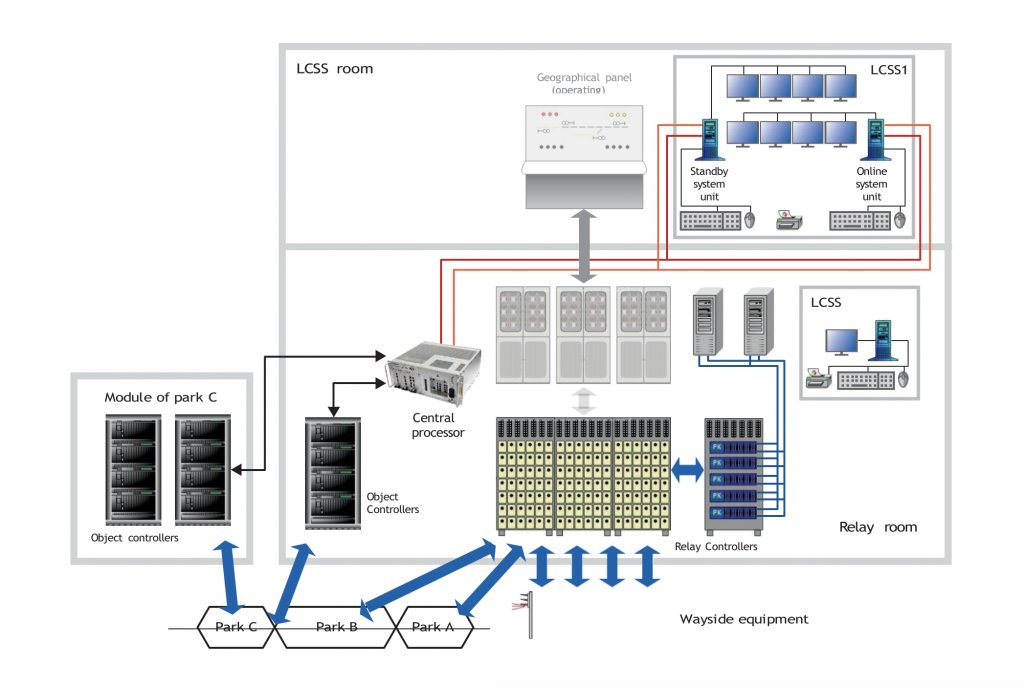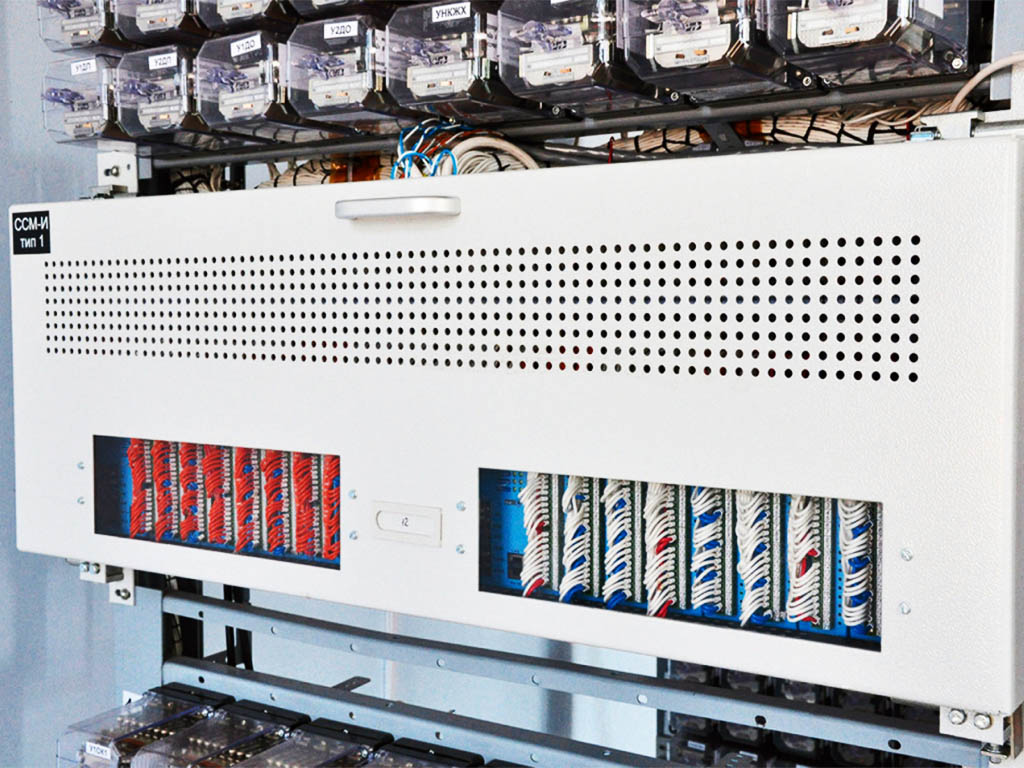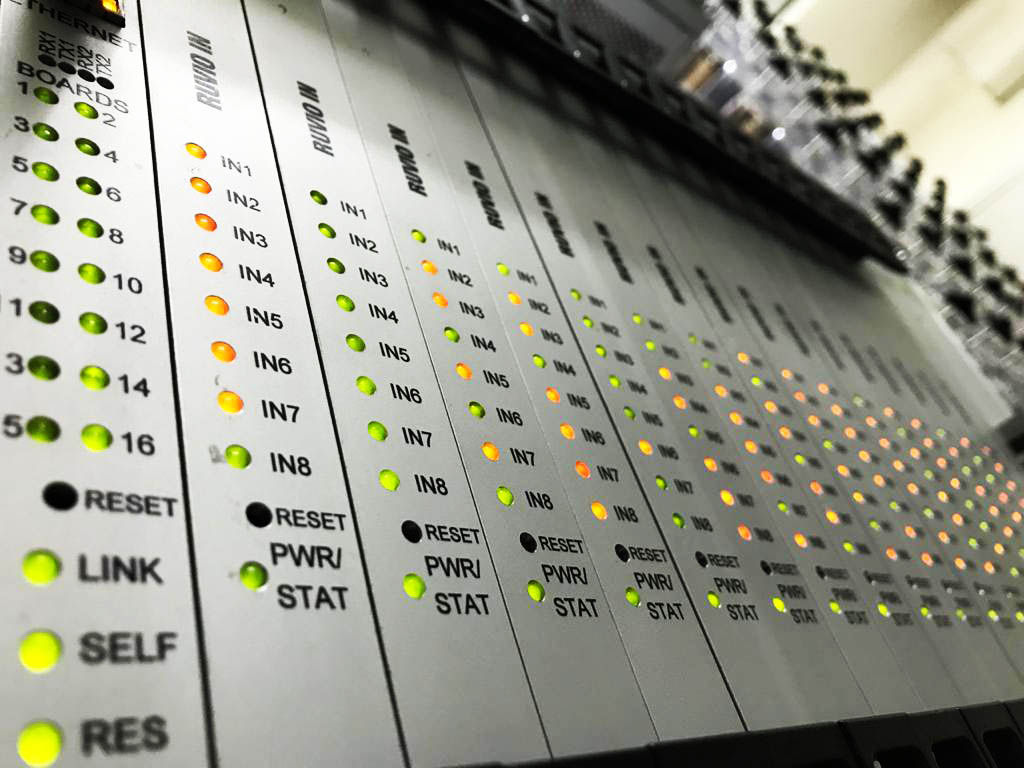FLEXIBLE SOLUTION FOR MODERNIZATION OF LARGE, MEDIUM-SIZE AND SMALL STATIONS
The hybrid interlocking system by 1520 Signal allows updating signaling equipment at stations in a staged manner, without significant one-time capital investment and by keeping the operating cable networks and wayside equipment. The HIS system allows implementing different configurations with exceptional flexibility and achieving immediate results even after partial implementation of digital technologies.
The system of relay-based interlocking allows switching to computer-based equipment and a modern ergonomic Local Control Supervisory System in case of a tight budget allocated for modernization or construction of new stations. Further on, gradual replacement of relay components for computer-based ones is possible. Implementation of the HIS system is also justified in situations when the functionality of the existing relay system doesn’t satisfy the increased requirements.
In case of mutual use of data from controllers by the HIS and CPU the most advanced RUVIO controllers are used. If required it is possible to keep the standby panel board — for example, at the stations with two-panel boards. If the task is to keep only the wayside equipment, the solution is proposed, when all the dependencies are implemented in the central processor, and RUVIO object controllers manage the wayside equipment with the help of relay interface.
Moreover, the HIS system can operate separately without interoperability with the CBI system. LCSS, HIS components, the MSPU or PUSHP power supply unit with surge overvoltage protection system are applied in the HIS system.
The relay interface controller in an operating cabinet and the RUVIO relay object controller — a solution of the HIS system
THE MAIN ADVANTAGES OF THE HIS SYSTEM
- Possibility to renovate stations with an unlimited number of points.
-
The unified and modern Local Control and Supervisory System (LCSS).
-
Automated route setting from Local Control and Supervisory System (LCSS).
-
Flexible reconfiguration of several operators’ control zones during peak load hours.
-
Increased labor productivity of Local Control and Supervisory System (LCSS) and Field Engineering Unit (FEU) due to the implementation of modern automated workplaces, detailed reference information and a help system.
-
Execution of all the functions of a full-scale CBI system on the upper level (developed diagnostic system, backup, data logging, digital integration with the external computer-based diagnostic system, CTC, ATP, etc.).
-
Possibility to implement the whole operating logic in the central processor and object controllers of the CBI system.
-
Keeping all wayside equipment, including track circuits with minor modifications in coding schemes.
-
Switching over into HIS in the shortest possible term. Spare relay contacts are used when mounting and all the checks are carried out before the devices are switched on.
-
During further equipping the station with CBI, the major part of the installed equipment is kept (automated workplaces, servers, central processors, and data exchange networks).
One of the options of the HIS structure with replacement of the geographical panel and unit-block system for computer-based equipment:

APPLICATION
As it stands, the HIS system operates on the Russian Railways network and industrial transport , as well as on the Moscow Metro:
-
Rudnevo depot;
-
Solntsevo depot.
The system is expected to be installed on such facilities of the Moscow Metro as:
-
Vladykino depot;
-
Uzhnoe depot;
- Stolbovo depot.
PRODUCTS













